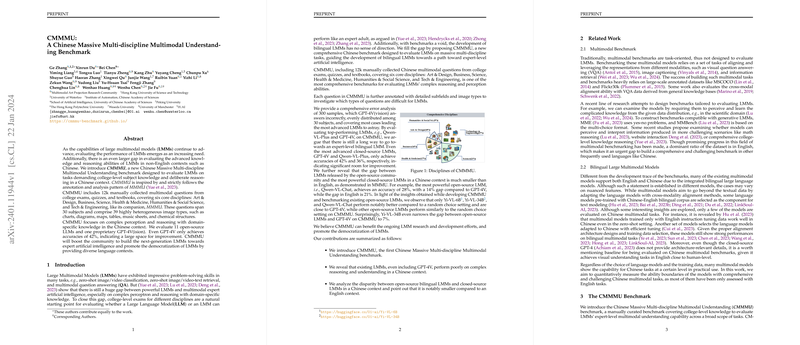Understanding the GPT-4V Model's Performance on Diverse Tasks
Introduction to GPT-4V Model Evaluation
The evaluation of the GPT-4V model's capabilities across disciplines highlights the complexities of contextual understanding, particularly in nuanced tasks combining graphical information with textual metadata. The efficiency of the model's outputs was rigorously tested, not just through binary tasks but also through its aptitude for intricate details within imagery and comprehensive data tables.
Analysis of Model Accuracy and Limitations
Detailed examinations of the model's responses were carried out. It's observable that GPT-4V manifests high accuracy in instances where context clues within the text and imagery were overt and logically coherent. However, several cases spotlight noteworthy errors which can be categorized into perceptual errors, reasoning errors, answer extraction errors, lack of knowledge, and instances of complete rejection to answer. Each demarcated category sheds light on specific improvements that can potentially enhance the model's outputs.
Examples of Model Performance
- Instances of Perceptual Errors were evidenced when the model struggled with image interpretations that required granular scrutiny or when explicit numerical details were essential for a precise response.
- Reasoning Errors were most prevalent in tasks requiring extrapolation from provided data or where multiple steps of logic were essential to reach a valid conclusion.
- When it came to Answer Extraction Errors, it was found that even when the model correctly understood a question, it occasionally selected incorrect answers due to extractive limitations of its current programming.
- The Lack of Knowledge surfaced when the model faced questions demanding expertise outside of its trained scope or when nuanced domain knowledge was required for accurate answers.
- The model at times opted for a complete Rejection to Answer, predominantly in situations where ethical considerations or a lack of the domain-specific understanding were present.
Recommendations for Model Improvement
Based on the evaluation, it's evident that enhancements in the model's ability to parse images, improved understanding of complex data interaction, and a boost in the domain-specific knowledge bank could propel the GPT-4V towards delivering more refined results. Additionally, fine-tuning its answer extraction processes and inferring capabilities could further mitigate erroneous outputs, while implementing context-sensitive refusal-to-answer protocols will present a more user-friendly response system.
Conclusion
In summary, while the GPT-4V model exhibits remarkable abilities in a diverse array of tasks, it's clear that there's an avenue for continuous learning and development. Advances in AI modeling will make way for heightened precision in task execution, more robust knowledge application, and a sophisticated approach to complex problem-solving, enriching the journey towards AI that closely simulates human-level understanding and reasoning.
